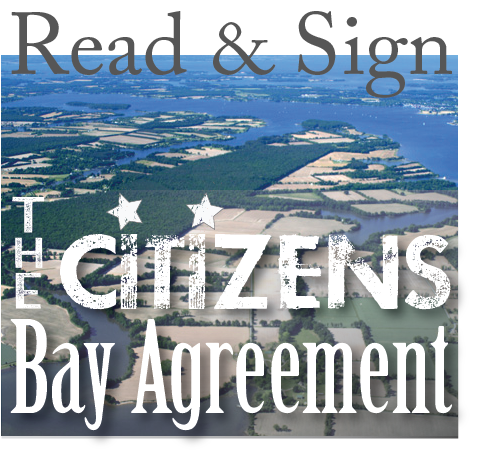Chesapeake Bay Action Plan
After decades of effort, the voluntary, collaborative approach to restoring the health and vitality of the Chesapeake Bay— the largest estuary in the United States—has not worked and, in fact, is failing.
A diverse group of 57 senior scientists and policymakers have joined forces to save the Bay. This is our plan.
Coming Soon to a Bay Near You: Liquid Poop
(Posted by Jeanne McCann.)
No, the brown stuff isn’t mud. It’s runoff from liquid manure going directly into Harnish Run, which is a tributary of the Cocalico Creek in Northern Lancaster County. Which ends up guess where (hint: Chesapeake Bay). Photos were taken two to three days after application on top of snow-covered hard-frozen ground.
Low Expectations in Pennsylvania
Good luck, Chesapeake Bay. Pennsylvania’s new governor and legislature have no interest in protecting Pennsylvania’s resources and environment, let alone the Chesapeake Bay. We have been assured that environmental regulations will not stand in the way of industrial progress.
Video: Don’t We Have Laws to Stop Agricultural Pollution?
(Posted by Jeanne McCann.)
Former Maryland state Sen. Gerald Winegrad discusses current regulations addressing agricultural pollution in Chesapeake Bay.
D.C. Environmental Film Festival Features Chesapeake Bay Films
(Posted by Jeanne McCann.)
The D.C. Environmental Film Festival is showing four timely films on Wednesday, March 23, from 6 p.m. – 9 p.m., at the Carnegie Institution for Science (Elihu Root Auditorium, 1530 P St., NW; Metro: Dupont Circle, 19th St. exit. Red line, Metrobuses: S1, S2, S4, S9, G2) Elizabeth Buckman, Vice President, Communications, Chesapeake Bay Foundation, will moderate the program, and introduce the filmmakers.
Agribusiness Lobby Resorts to Warfare Against Chesapeake Bay
(Posted by Gerald Winegrad.)
Despite repeated scientific analyses and data documenting agriculture as the Chesapeake Bay’s #1 polluter, the giant agribusiness lobby continues to resist better practices to stem the bay-killing nutrients and sediment flowing from farm land.
House Ag Committee’s Assault on Science
(Posted by Bill Thompson.)
The assault against science and facts hit a new low when opponents of mandatory efforts to regulate clean water in the Chesapeake Bay used a March 16 House Agriculture subcommittee hearing to further their attempts to undercut the U.S. EPA’s Total Maximum Daily Loads (TMDL) requirements.
Don’t Confuse Agri-Business With Family Farms
(Posted by Fred Tutman.)
I am deeply upset about what appears to be an unavoidable collision course brewing between Chesapeake Bay advocates and a relatively small segment of the agricultural community that has a big footprint in Maryland and in the Chesapeake Bay. It is a confrontation that is causing huge rifts between champions for water quality and advocates for the future of “true” agriculture in the state. It is a fight that is fast making enemies of those who really should be allies.
Video: Oyster and Crab Populations in the Chesapeake Bay
(Posted by Gerald Winegrad.)
Gerald Winegrad discusses the effects of pollution on oyster and crab populations in the Chesapeake Bay:
We are senior Chesapeake Bay scientists and policymakers from Maryland, Virginia and Pennsylvania who have concluded that after decades of effort, the voluntary, collaborative approach to restoring the health and vitality of the largest estuary in the United States has not worked and, in fact, is failing. Our group unanimously recommends that all states draining into the Chesapeake Bay adopt our 25 action items in their Watershed Implementation Plans (WIP) and implement them to improve the Bay’s water quality and to meet the requirements of the Clean Water Act.
Sign up for news & updates from Patuxent Riverkeeper
